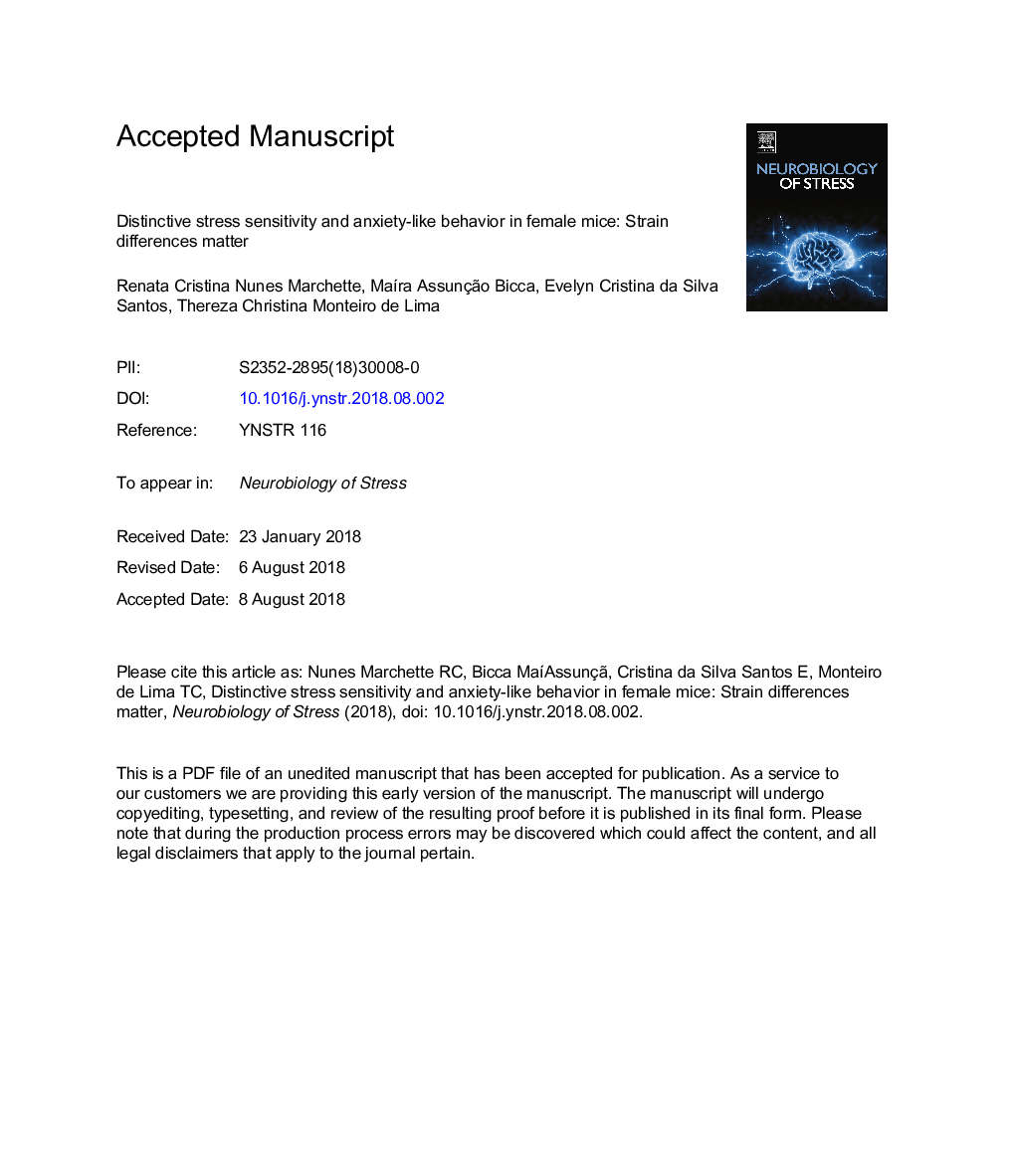| Article ID | Journal | Published Year | Pages | File Type |
|---|---|---|---|---|
| 10106883 | Neurobiology of Stress | 2018 | 36 Pages |
Abstract
Epidemiologic studies have shown that the prevalence of stress-related mood disorders is higher in women, which suggests a different response of neuroendocrine circuits involved in the response to stressful events, as well as a genetic background influence. The aim of this study was to investigate the baseline differences in anxiety-like behaviors of females of two commonly used mice strains. Secondly, we have also aimed to study their behavioral and biochemical alterations following stress. Naïve 3-4 months-old Swiss and C57BL/6 female mice were evaluated in the elevated plus maze (EPM) and in the acoustic startle response (ASR) for anxiety-like behaviors. Besides, an independent group of animals from each strain was exposed to cold-restraint stress (30â¯min/4â¯Â°C, daily) for 21 consecutive days and then evaluated in EPM and in the sucrose consumption tests. Twenty-four hours following behavioral experimentation mice were decapitated and their hippocampi (HP) and cortex (CT) dissected for further Western blotting analysis of glucocorticoid receptor (GR) and glial fibrillary acid protein (GFAP). Subsequent to each behavioral protocol, animal blood samples were collected for further plasma corticosterone analysis. C57BL/6 presented a lower anxiety profile than Swiss female mice in both behavioral tests, EPM and ASR. These phenomena could be correlated with the fact that both strains have distinct corticosterone levels and GR expression in the HP at the baseline level. Moreover, C57BL/6 female mice were more vulnerable to the stress protocol, which was able to induce an anhedonic state characterized by lower preference for a sucrose solution. Behavioral anhedonic-like alterations in these animals coincide with reduced plasma corticosterone accompanied with increased GR and GFAP levels, both in the HP. Our data suggest that in C57BL/6 female mice a dysregulation of the hypothalamus-pituitary-adrenal axis (HPA-axis) occurs, in which corticosterone acting on GRs would possibly exert its pro-inflammatory role, ultimately leading to astrocyte activation in response to stress.
Keywords
Related Topics
Life Sciences
Neuroscience
Behavioral Neuroscience
Authors
Renata Cristina Nunes Marchette, MaÃra Assunção Bicca, Evelyn Cristina da Silva Santos, Thereza Christina Monteiro de Lima,
